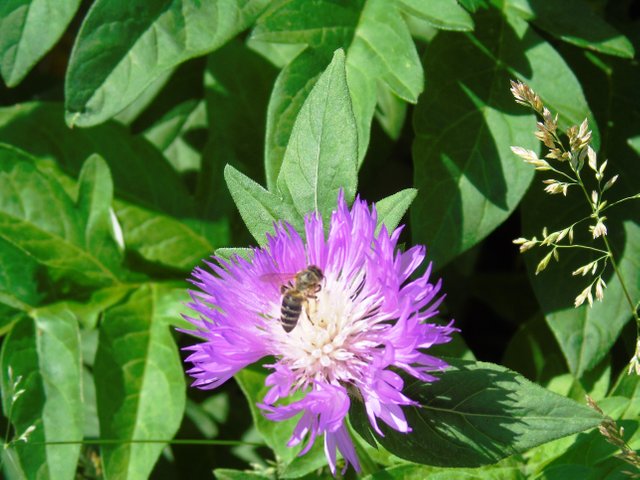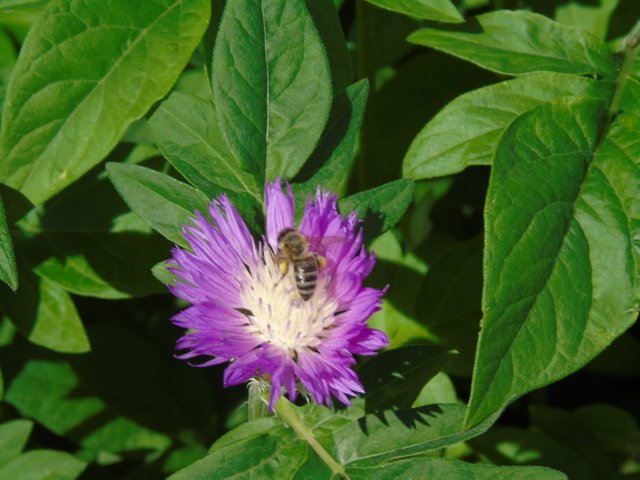Honey aroma of a flower.
(
Cornflower.It grows on sandy, like a weed among the crops of rye, wheat, flax.
Areas of distribution - except for arid regions and the Far North. They are collected and harvested mainly in Ukraine, Byelorussia, Krasnodar Territory, Western Siberia.
(
Cornflower in myths and legends
Vasilek came to us from ancient times. During the excavation of the tomb of Tutankhamun, many items of precious stones and gold were found, but no less surprising was the fact that along with all these treasures archaeologists discovered in the tomb of the pharaoh a small wreath of cornflowers. The flowers dried, but they retained their color and shape.
According to Greek mythology, the cornflower was discovered by the centaur Chiron, who, with the juice of a cornflower, healed his wounds inflicted by Hercules.
But the ancient Roman legend claims that this flower got its name "cyanus" by the name of a beautiful young man who was so keen on the beauty of a cornflower that he devoted all his time to weaving garlands of wreaths out of him. The young man did not leave the fields until at least one cornflower remained on them. And he always dressed in a blue dress. Subsequently, the young man was found dead on the bread field by surrounded cornflowers. Then Flora (the Roman goddess of blossoming), who was his favorite goddess, for such his constancy and as a sign of a special attitude towards him, turned the boy's body into a cornflower, and all the cornflowers have since become known as cyanosis.
Slavic name of this flower, according to the legend, came from the name of a young guy Vasil, the only son of his mother, bewitched and ruined by a mermaid. The mermaid fell in love somehow with the young plowman Vasil. Every day she fumbled from afar, hiding behind the reeds, since the very morning she had been following him closely. And one day, when Vasil, having finished his work, approached the river to wash, the mermaid could not stand it and appeared before him in all its glory. They have fallen in love with each other. They had complete agreement in everything, but could not agree on where they had better live together. The mermaid called Vasily to her native water element, and he suggested settling near the arable land. For a long time they argued, but they could not find consent. Realizing that the uncompromising Vasil never obeys persuasion, the mermaid decided on the last extreme: she turned it into a modest blue flower. More than once, looking like raindrops gathering streams, merge into rivers, she hoped that the blue flower - Vasil - would eventually come to her house, but her expectations were not justified - the knapweed firmly holds its roots for its native arable land.
About this beautiful flower there is another beautiful and lyrical Russian legend.
One day the sky said to the field: "Everything that inhabits the earth, thanks me. Birds send me singing, flowers - fragrance and color, forest - the noise of oak trees and only you do not express gratitude, although none other, namely, I fill the roots of your cereals with rainwater and make ripening ears. "
Niva began to object to the rebuke of the sky, that she, too, was grateful to him: "I adorn the arable land with ever-stirring greenery, and in the autumn I cover it with gold. And I, of course, would like to come up to you and shower with caresses and words of love, but you do know - I can not. "
And the sky decided that if the field could not rise to him, then he would come to her, so be it.
And as soon as the sky said these words, immediately a miracle happened - among the ears rose magnificent blue flowers, similar in color to the hot sky. Since then, ears of cereals with every breath of the wind tend to the messengers of the sky - cornflowers and whisper soft words to them.
This legend explains the fact that the cornflower has always been a constant companion of the rye field. True, now, fighting weeds, they are weeded out, while modern science has proved: if one hundred seeds of corn are added to one hundred seeds of rye, rye will grow better.
The first was marked, when on a field appeared ears. During this holiday, young girls and boys gathered on the outskirts of the village, stood in two rows against each other, holding hands, and on hand, as on a bridge, there was a girl with cornflowers and ribbons. Couples moved from the last rows to the first until the girl on their hands did not approach the field. At the field, she went to the ground, tore several ears and fled with them to the village, where her parents were waiting.
The second holiday - the "Name Sheaf" was held at the end of summer, before harvesting bread. Women-housewives came out with bread and salt to heal the field. Knit the first sheaf, decorated it with cornflowers and put it in the red corner of the house. The first sheaf was named after him.
The same great popularity was enjoyed by the cornflower also among the Germans. Still some hundred years ago at the most lavish feasts among other flowers must have been present cornflower.
a source: https://mag.org.ua
Very interesting legends!